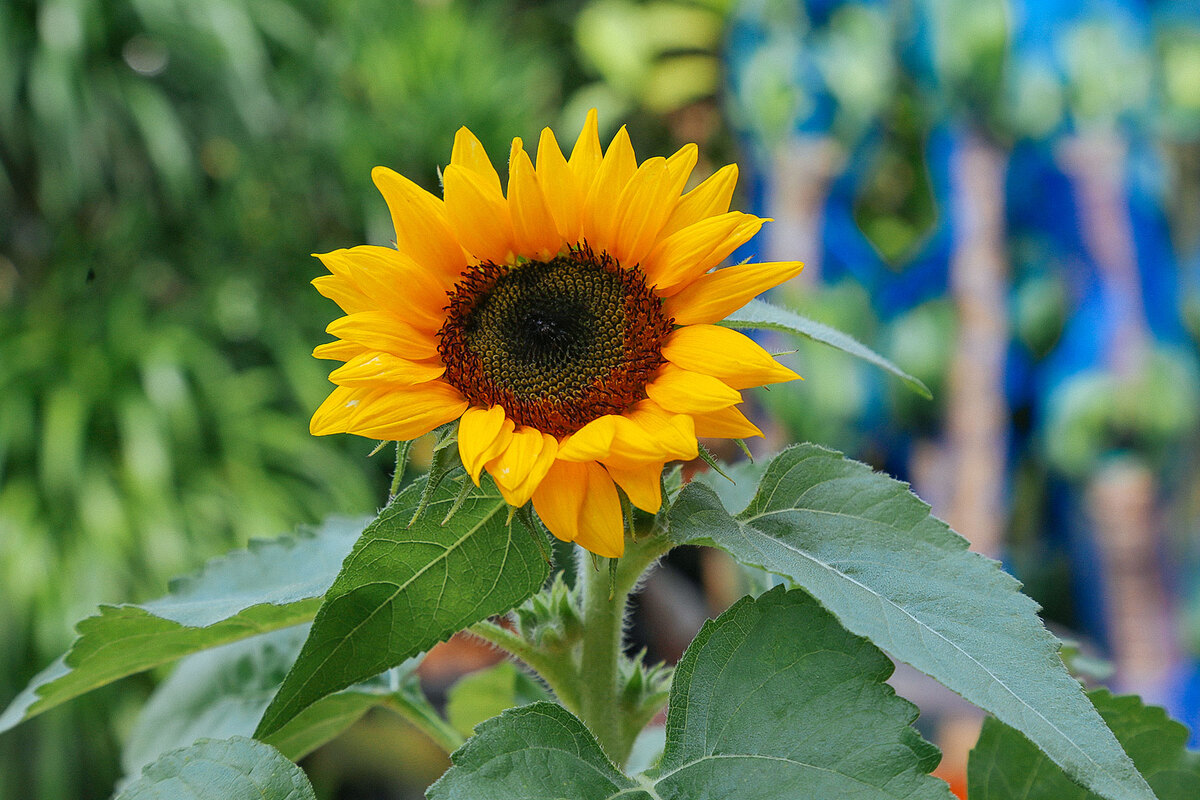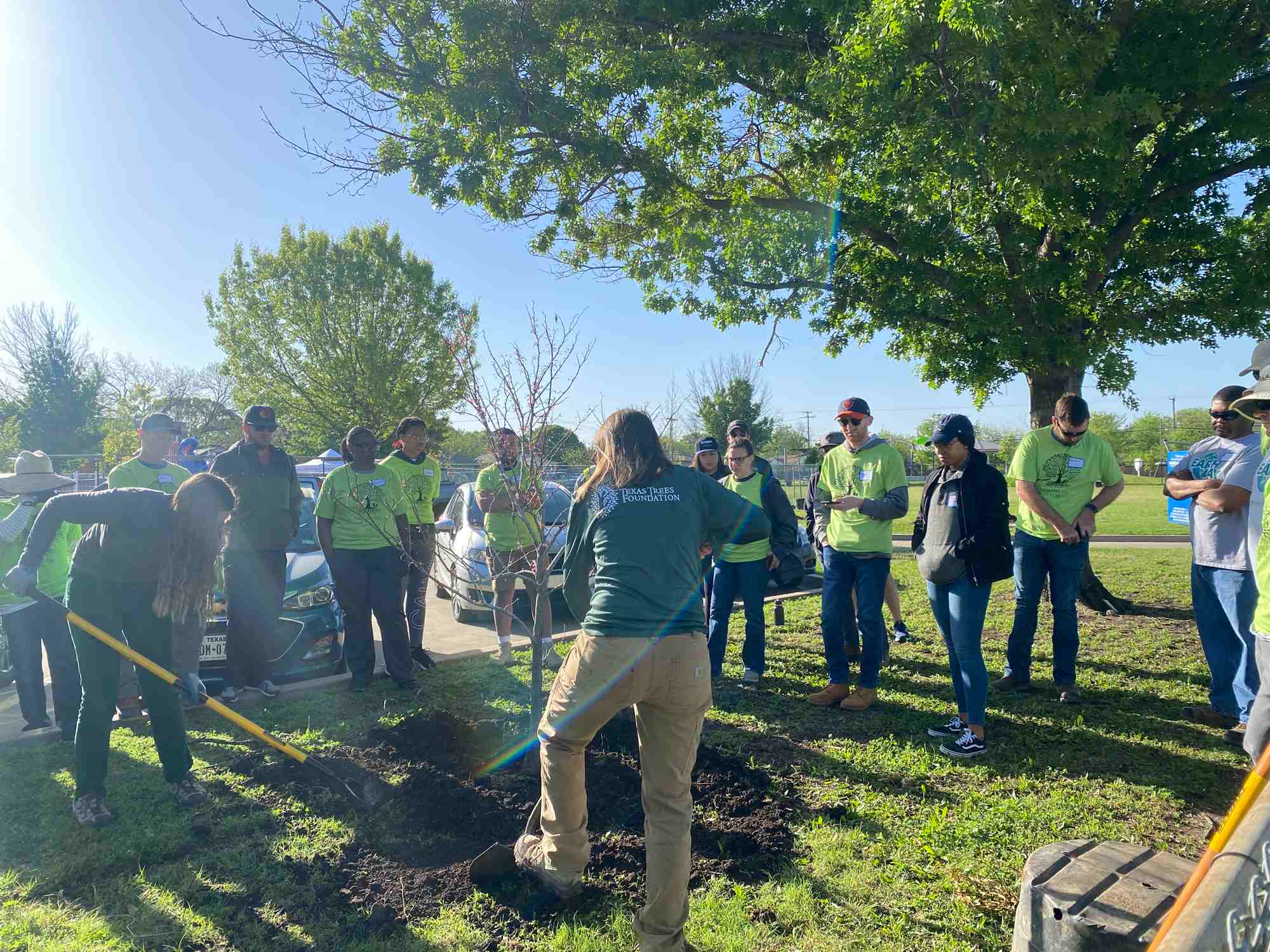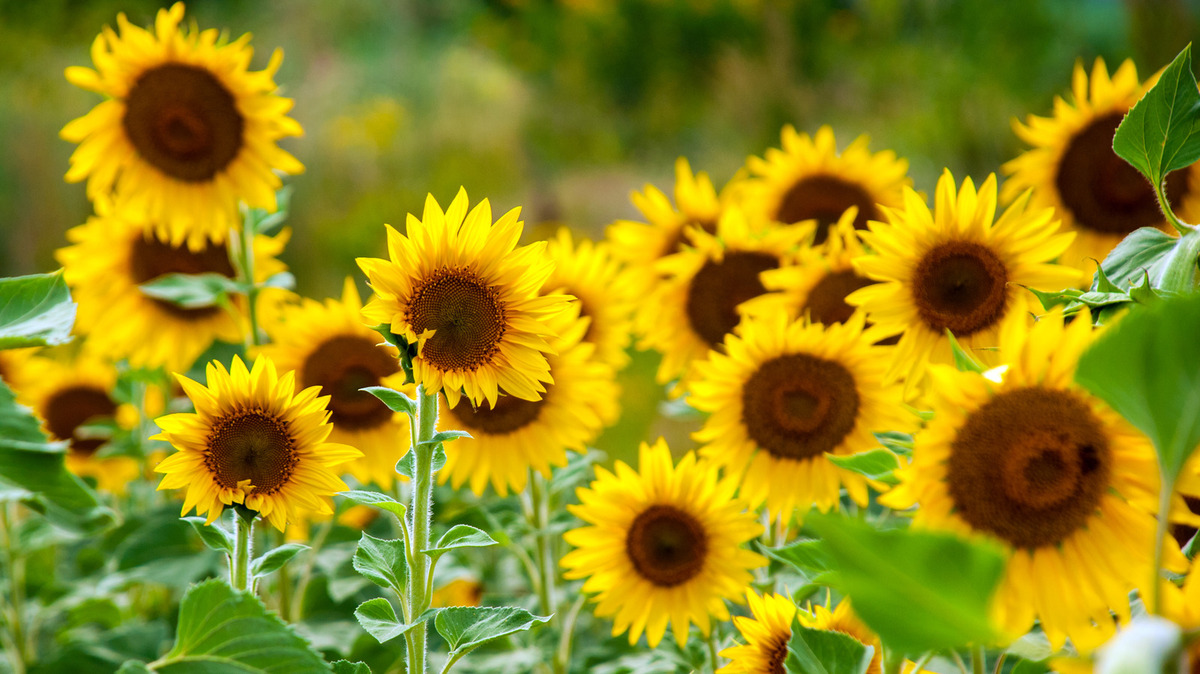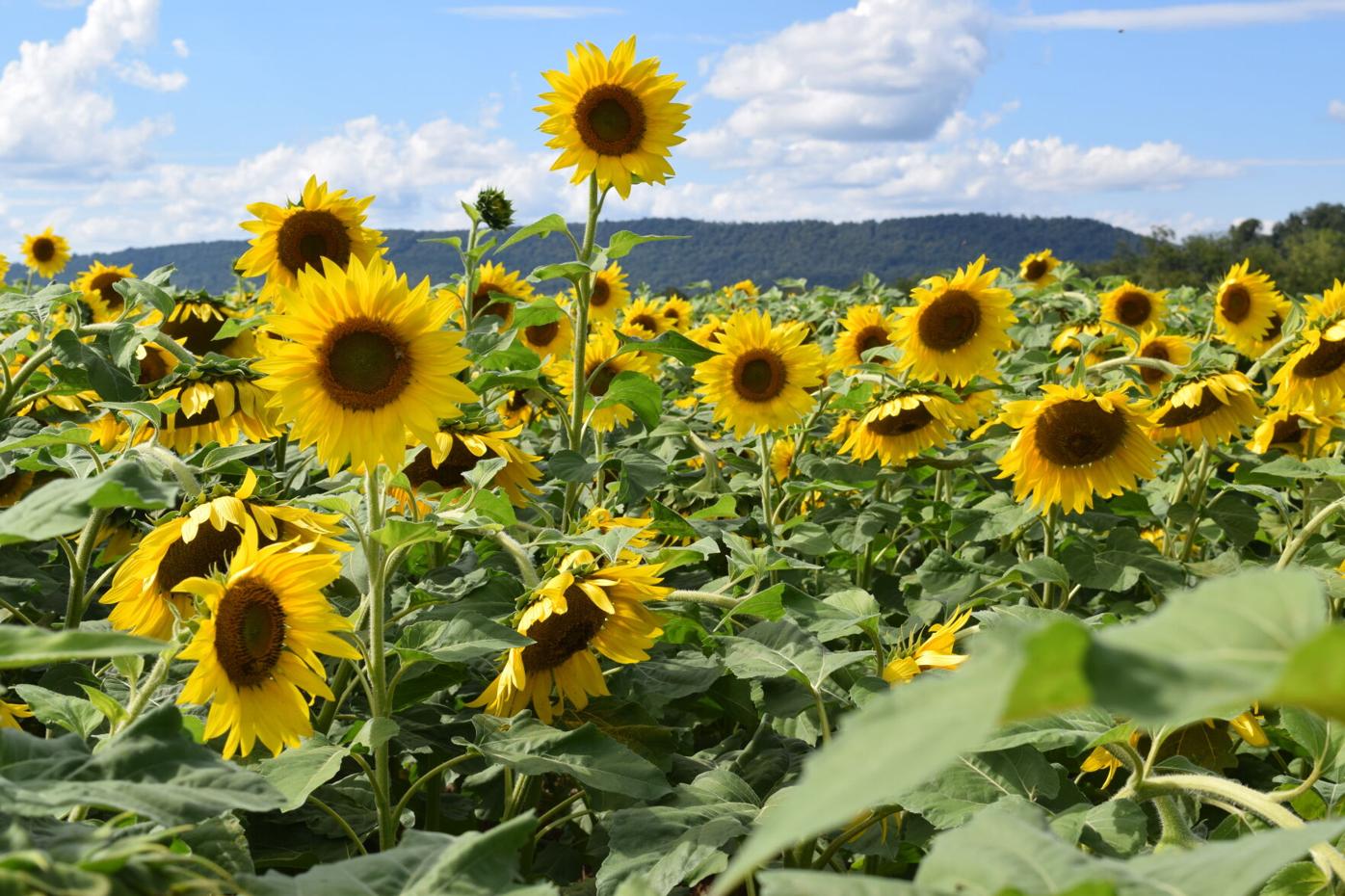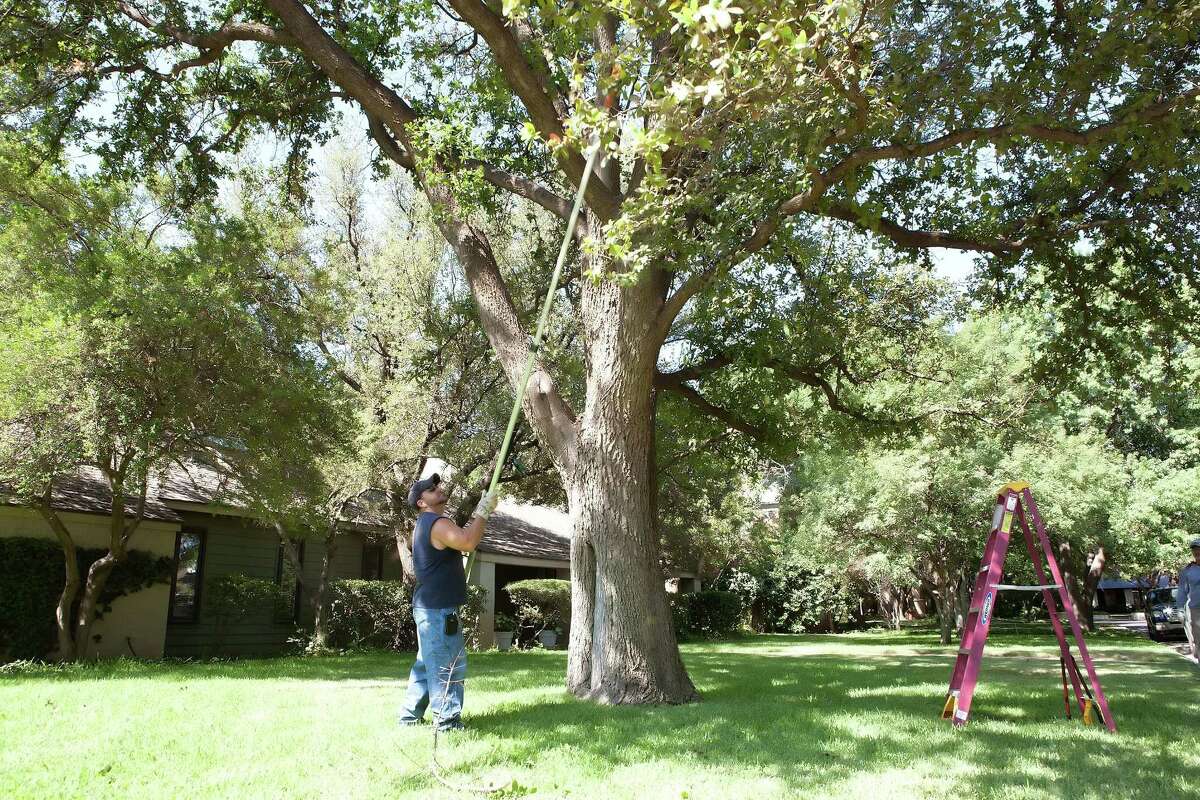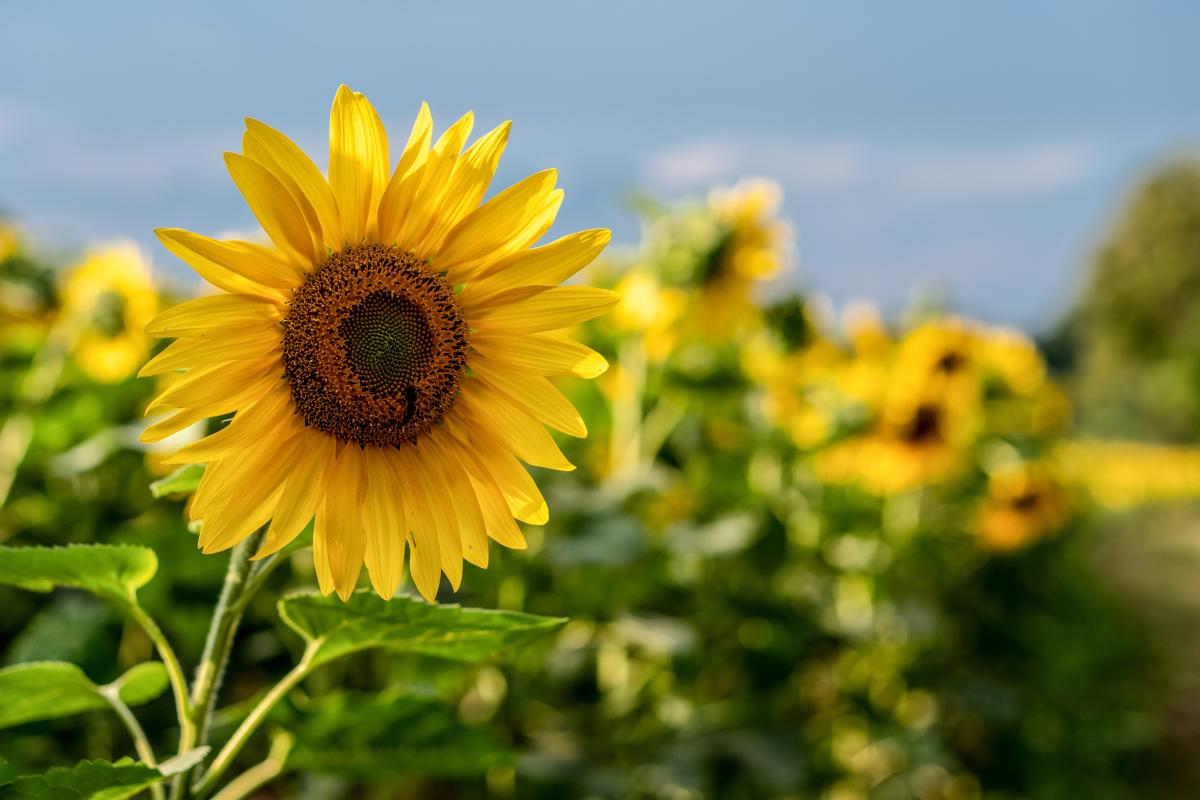Home>Types of Gardening>Ornamental Gardening>When To Plant Sunflowers In Texas
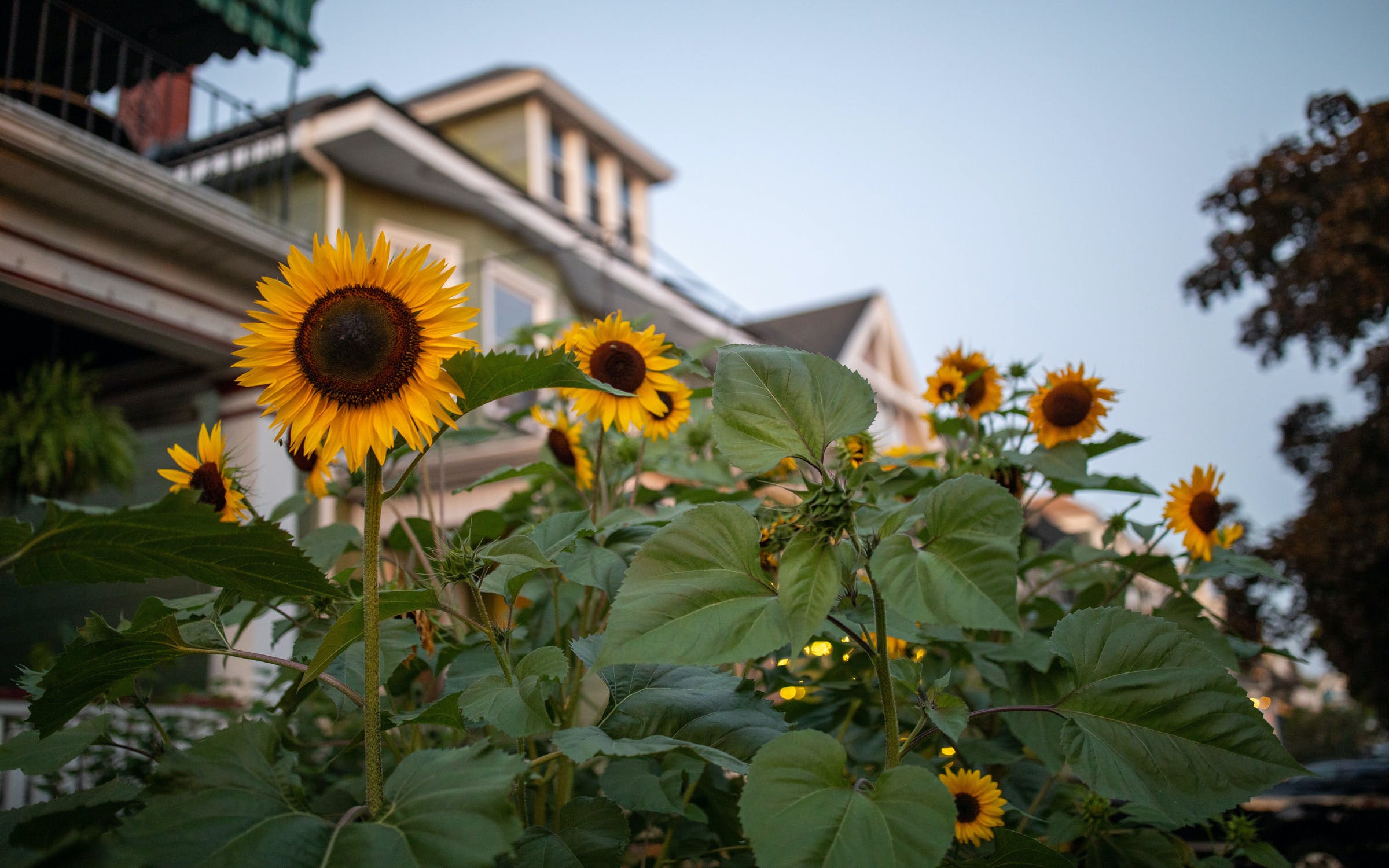

Ornamental Gardening
When To Plant Sunflowers In Texas
Modified: January 22, 2024
Discover the ideal time for planting sunflowers in Texas for your ornamental gardening endeavors. Enhance your garden with vibrant sunflowers that thrive in the Texas climate.
(Many of the links in this article redirect to a specific reviewed product. Your purchase of these products through affiliate links helps to generate commission for Chicagolandgardening.com, at no extra cost. Learn more)
Table of Contents
- Introduction
- Understanding Sunflowers
- Climate and Sunflower Planting Zones in Texas
- Best Time to Plant Sunflowers in Texas
- Factors to Consider When Planting Sunflowers in Texas
- Planting Sunflowers: Step-by-Step Guide
- Caring for Sunflowers in Texas
- Harvesting and Storing Sunflower Seeds
- Common Problems and Pests for Sunflowers in Texas
- Conclusion
Introduction
Welcome to the world of ornamental gardening! If you have an appreciation for the beauty of nature and want to create a stunning outdoor space, then ornamental gardening is the perfect hobby for you. And what better way to enhance your garden than by incorporating sunflowers?
Sunflowers are not only charming and vibrant, but they also symbolize happiness and have a way of brightening up any landscape. Their large, golden blooms can reach impressive heights and make a striking addition to any garden or backyard.
In this article, we will explore the optimal times for planting sunflowers in the great state of Texas. By understanding the nuances of the climate and various planting zones, you can ensure that your sunflowers thrive and bloom magnificently.
Whether you’re a beginner gardener or have some experience with ornamental plants, this guide will provide you with all the information you need to ensure successful sunflower cultivation in Texas. From planting tips to caring for your sunflowers throughout the season, we’ve got you covered.
So, grab your gardening gloves, put on your hat, and join us as we embark on the journey of growing beautiful sunflowers in the Lone Star State!
Understanding Sunflowers
Sunflowers, scientifically known as Helianthus annuus, are a member of the daisy family, Asteraceae. With their bright yellow petals and dark centers, they are instantly recognizable and beloved by gardeners worldwide.
One of the fascinating aspects of sunflowers is their ability to track the movement of the sun throughout the day. This phenomenon is known as heliotropism. In the morning, the flowers face east, following the path of the rising sun, and gradually turn westward as the day progresses, always seeking sunlight.
These stunning flowers are native to North America and were initially cultivated by Native American tribes for their seeds and oil. Over time, sunflowers gained popularity for their ornamental value and are now a common sight in gardens across the globe.
Sunflowers come in various sizes, ranging from dwarf varieties that reach only a few feet tall to mammoth types that can tower over 15 feet. Their blooms can range in diameter from a few inches to more than a foot.
In addition to their aesthetic appeal, sunflowers also offer ecological benefits. Their large, vibrant flowers attract bees, butterflies, and other pollinators, promoting biodiversity in the garden. Furthermore, their seeds are a valuable food source for birds and wildlife.
Sunflowers have a relatively short lifespan, typically blooming for a few weeks during the summer months. However, these weeks are filled with splendor, with the radiant blooms capturing the attention of all who pass by.
Now that you have a better understanding of these magnificent flowers, let’s move on to exploring the optimal climate and planting zones in Texas, so you can make the most of your sunflower gardening adventures.
Climate and Sunflower Planting Zones in Texas
Texas is known for its diverse climate, ranging from humid subtropical in the east to semi-arid and arid in the west. When it comes to growing sunflowers, understanding the climate and planting zones is crucial for successful cultivation.
Generally, sunflowers thrive in areas with long, hot summers and plenty of sunlight. In Texas, the climate is well-suited for sunflowers, with most regions experiencing favorable conditions for their growth.
Texas is divided into various USDA hardiness zones, which provide guidance on the types of plants that can thrive in different regions. The specific planting zones for sunflowers in Texas range from zones 6 to 10, with zone 6 being the coolest and zone 10 being the warmest.
In the cooler regions of Texas, such as the northern parts and the Panhandle, sunflowers can still be successfully grown. However, it is important to choose varieties that are tolerant of lower temperatures and have shorter growing seasons. These varieties will have a higher chance of producing healthy blooms before the onset of frost.
In the hotter and more arid regions of Texas, such as West Texas and the Rio Grande Valley, sunflowers thrive with their preference for full sun and warmth. These areas have longer growing seasons, offering a greater window for sunflower cultivation.
It is essential to consider the microclimates within each region as well. Factors such as elevation, proximity to bodies of water, and the amount of rainfall can influence the ideal planting times and varieties suitable for sunflowers.
To determine your specific planting zone in Texas, refer to the USDA hardiness zone map or consult with local gardening experts. They can provide valuable insights and recommendations based on your location.
Now that you have a better understanding of the climate and planting zones in Texas, let’s move on to the best time to plant sunflowers to ensure optimal growth and bloom.
Best Time to Plant Sunflowers in Texas
The timing of when to plant sunflowers in Texas can greatly impact their success and overall growth. Sunflowers thrive in warm weather and require a certain number of frost-free days to reach their full potential.
In Texas, the best time to plant sunflowers is typically in early spring, after the threat of frost has passed. This can vary depending on the specific region and planting zone you are in.
In the northern parts of Texas, where the climate is cooler, it is recommended to wait until late March or early April to ensure that the temperatures are consistently above freezing. This helps prevent any potential damage to the emerging sunflower seedlings.
In the central and southern regions of Texas, where the climate is warmer, you can start planting sunflowers as early as late February or early March. These areas generally have longer growing seasons, giving sunflowers ample time to mature and produce vibrant blooms.
It’s important to note that sunflowers are sensitive to cold temperatures and frost. If a late-season frost is expected, it is advisable to cover the sunflower seedlings with a protective layer, such as a frost cloth or plastic sheeting, to shield them from the cold.
Another factor to consider when determining the best time to plant sunflowers is the soil temperature. Sunflower seeds germinate best when the soil temperature is around 55 to 70 degrees Fahrenheit. You can use a soil thermometer to measure the temperature and ensure optimal conditions for germination.
By planting sunflowers at the right time in Texas, you give them the best chance to establish strong root systems and thrive throughout the growing season. This, in turn, leads to healthy plants and abundant blooms.
Now that you know the ideal time to plant sunflowers in Texas, let’s explore some essential factors to consider when planting them to ensure successful growth and long-lasting beauty in your garden.
Factors to Consider When Planting Sunflowers in Texas
When it comes to planting sunflowers in Texas, there are several key factors to consider to ensure the best possible outcome for your garden. By taking these factors into account, you can set your sunflowers up for success and maximize their growth and beauty.
1. Sunlight: Sunflowers are sun-loving plants that require at least six to eight hours of direct sunlight per day. Choose a planting location in your garden that receives abundant sunlight throughout the day, ideally facing south or west to capture the maximum amount of sunlight.
2. Soil Quality: Sunflowers thrive in well-draining soil with a pH level between 6.0 and 7.5. Before planting, amend the soil with organic matter such as compost to improve its fertility and nutrient content. Avoid heavy soils that retain moisture as this can lead to root rot and poor growth.
3. Spacing: Give your sunflowers enough space to grow to their full potential. Depending on the variety, space the seeds or seedlings approximately 12 to 24 inches apart. This allows for proper air circulation and reduces the risk of diseases.
4. Watering: While sunflowers are relatively drought-tolerant once established, regular watering is necessary during the germination and early growth stages. Keep the soil moist, but not overly saturated, especially in hot and dry climates like Texas.
5. Mulching: Applying a layer of mulch around the sunflower plants helps conserve moisture, suppress weeds, and regulate soil temperature. Use organic materials such as straw or wood chips and spread it around the base of the plants, leaving a small gap around the stems to avoid excess moisture on the plant.
6. Support: Taller sunflower varieties may require staking or support as they grow to prevent them from toppling over in strong winds or heavy rain. Install stakes or use a trellis system to provide support without damaging the root system.
7. Pest Control: Sunflowers are relatively resistant to pests, but there are a few common ones to watch out for in Texas, such as aphids, caterpillars, and birds that may feed on the seeds. Consider using organic pest control methods or companion planting to deter pests and protect your sunflowers.
By considering these essential factors when planting sunflowers in Texas, you can create an ideal environment for these vibrant flowers to grow and thrive. Now, let’s dive into a step-by-step guide on how to plant sunflowers in your garden.
Planting Sunflowers: Step-by-Step Guide
Planting sunflowers in your garden can be a rewarding and enjoyable experience. Follow these simple steps to ensure successful growth and a stunning display of vibrant blooms.
Step 1: Choose the Right Location – Select a sunny spot in your garden that receives at least 6 to 8 hours of direct sunlight each day. Ensure that the soil is well-draining and fertile.
Step 2: Prepare the Soil – Clear the area of any weeds, rocks, or debris. Loosen the soil using a garden fork or tiller to a depth of about 6 to 8 inches. Incorporate organic matter, such as compost, into the soil to improve its fertility.
Step 3: Determine the Planting Depth – Sunflower seeds are typically planted 1 to 2 inches deep in the soil. Refer to the specific instructions on the seed packet for accurate depth recommendations for the variety you are planting.
Step 4: Plant the Seeds – Create a hole in the soil with your finger or a garden tool. Place one or two sunflower seeds in each hole, spacing them according to the recommended distance for your chosen variety. Cover the seeds with soil and gently pat it down to ensure good seed-to-soil contact.
Step 5: Water the Seeds – Give the newly planted seeds a thorough watering. Ensure that the soil is evenly moist but not overly saturated. Water regularly, especially during the germination and early growth stages.
Step 6: Provide Support (if necessary) – If you’re growing tall sunflower varieties, consider providing support to prevent them from toppling over in wind or rain. Install stakes or use a trellis system to support the plants without damaging the roots.
Step 7: Maintain Care – Throughout the growing season, monitor the soil moisture and water when necessary. Mulch around the base of the sunflowers to retain moisture and prevent weed growth. Monitor for signs of pests or diseases, and take appropriate measures for control.
Step 8: Enjoy the Blooms – As your sunflowers grow, they will start to produce their iconic, radiant blooms. Watch as the flowers follow the sun’s path throughout the day and bring joy to your garden.
By following this step-by-step guide, you can successfully plant sunflowers in your Texas garden. Now, let’s explore how to care for your sunflowers to ensure their continued health and beauty.
Caring for Sunflowers in Texas
Once you have planted your sunflowers in Texas, it’s important to provide them with proper care to ensure their continued growth and beauty. Follow these essential tips to keep your sunflowers healthy and thriving throughout the growing season.
1. Watering: Sunflowers have deep taproots that allow them to tolerate drought conditions. However, it’s crucial to water them regularly, especially during dry spells. Provide deep waterings to encourage root growth and ensure the soil remains evenly moist, but not waterlogged.
2. Fertilizing: Sunflowers are relatively low-maintenance plants and typically do not require excessive fertilization. However, if your soil is poor in nutrients, you can apply a balanced fertilizer during the early stages of growth. Avoid over-fertilizing, as this can lead to excessive foliage growth at the expense of flower production.
3. Mulching: Maintain a layer of mulch around the base of the sunflowers to help retain soil moisture, suppress weeds, and regulate soil temperature. Organic mulch, such as straw or wood chips, is ideal for sunflowers.
4. Supporting: Taller sunflower varieties may require staking or support as they grow to prevent them from bending or breaking in strong winds. Install stakes or use a trellis system when necessary to provide support without damaging the roots.
5. Deadheading: As sunflowers bloom, they will start to fade and produce seed heads. To encourage continuous blooming and prevent self-seeding, remove the spent flowers by deadheading. Cut the stalk just above a leaf node or secondary bud to promote new flower growth.
6. Pest Control: Sunflowers are relatively resistant to pests, but there are a few common offenders to watch out for in Texas, such as aphids, caterpillars, and birds that may feed on the seeds. Regularly inspect your plants for signs of pests and take appropriate measures for control, such as using organic pest control methods or companion planting.
7. Weed Control: Keep the area around your sunflowers free from weeds to reduce competition for nutrients and water. Regularly inspect and remove any weeds that may appear near the base of the plants, taking care not to disturb the roots.
By providing proper care and attention to your sunflowers in Texas, you can ensure their longevity and enjoy their vibrant blooms for as long as possible. Now, let’s move on to the next step in the sunflower journey – harvesting and storing the seeds.
Harvesting and Storing Sunflower Seeds
One of the most rewarding aspects of growing sunflowers in Texas is the opportunity to harvest and enjoy the delicious and nutritious seeds they produce. Follow these steps to harvest and store sunflower seeds for future use:
1. Harvesting Time: Sunflower seeds are ready for harvest when the back of the flower head turns brown or yellow, and the seeds become plump and fully developed. The petals will also start to wilt and fall off. Avoid harvesting too early when the seeds are still immature.
2. Cut the Flower Heads: Use garden shears or a sharp knife to cut the flower heads from the stalks. Leave a few inches of stem attached to the flower head for easier handling.
3. Drying the Flower Heads: Hang the flower heads upside down in a warm, well-ventilated area, such as a garage or covered porch. Allow them to dry for 2 to 3 weeks or until the seeds are fully dry and the back of the flower head is completely brown and dry to the touch.
4. Removing Seeds: Once the flower heads are fully dry, gently rub them with your hands or use a fork to loosen and remove the seeds. The seeds will easily fall out of the flower head, revealing their distinct black or striped shells.
5. Cleaning the Seeds: To remove any remaining debris or plant material, place the seeds in a large bowl of water. Swish them around and skim off any floating material. Drain the seeds and spread them out on a paper towel or clean cloth to dry completely.
6. Storing the Seeds: Once the seeds are fully dry, transfer them to an airtight container, such as a glass jar or airtight plastic bag. Store the seeds in a cool, dark place, away from moisture and sunlight. Properly stored sunflower seeds can stay viable for 1 to 2 years.
7. Enjoying Sunflower Seeds: Sunflower seeds can be enjoyed in a variety of ways. Roast them for a crispy and nutty snack, add them to salads or granola, or use them as a topping for breads and pastries.
By harvesting and properly storing sunflower seeds, you can continue to enjoy the fruits of your labor long after the sunflowers have finished blooming. As a bonus, save some seeds to sow in the next planting season to continue the cycle of sunflower growth and beauty in your Texas garden.
Common Problems and Pests for Sunflowers in Texas
While sunflowers are generally hardy and relatively resistant to pests and diseases, there are a few common issues that can arise when growing them in Texas. Being aware of these problems and taking timely action can help ensure the health and vitality of your sunflowers. Here are some common problems and pests to watch out for:
1. Aphids: These small, soft-bodied insects can cluster on sunflower stems, leaves, and flower buds, sucking sap and causing stunted growth. To control aphids, you can try spraying them with a strong jet of water, using insecticidal soap, or introducing natural predators like ladybugs.
2. Caterpillars: Certain caterpillar species, such as the sunflower moth caterpillar or the painted lady caterpillar, can feed on sunflower leaves, flowers, and seeds. Hand-picking caterpillars or using organic insecticides can help control their population.
3. Birds: Birds, especially finches, are attracted to sunflower seeds and can cause damage by pecking at flower heads or consuming the seeds. To deter birds, consider using netting or installing scare devices like reflective tape or bird scare balloons.
4. Powdery Mildew: Powdery mildew is a fungal disease that appears as a white powdery coating on sunflower leaves, stem, and flower heads. Good air circulation, proper spacing, and avoiding overhead watering can help prevent this disease. If powdery mildew does occur, you can apply fungicidal sprays labeled for powdery mildew control.
5. Root Rot: Excessive moisture in poorly drained soil can lead to root rot, a condition where the roots become waterlogged and start to rot. To prevent root rot, ensure that your sunflowers are planted in well-draining soil and avoid overwatering.
6. Weeds: Weeds can compete with sunflowers for nutrients, water, and sunlight. Regularly monitor the area around your sunflowers and remove any weeds that may sprout. Mulching can also help suppress weed growth.
7. Nutrient deficiencies: Sunflowers may experience nutrient deficiencies, such as yellowing leaves (indicating nitrogen deficiency) or stunted growth (indicating phosphorus deficiency). Conduct soil tests to identify any nutrient imbalances and make appropriate fertilizer additions.
By keeping an eye out for these common problems and taking proactive measures, you can maintain the health and vitality of your sunflowers in Texas. Regular inspection, proper cultural practices, and timely intervention are key to ensuring successful sunflower growth and enjoyable garden experiences.
Conclusion
Growing sunflowers in Texas can be a rewarding and delightful experience. By understanding the climate and planting zones in Texas, you can choose the right time and varieties to ensure successful growth and blooming. Taking into account factors such as sunlight, soil quality, spacing, watering, and pest control will help create an optimal environment for your sunflowers to thrive.
From planting the seeds to caring for the plants and eventually harvesting and enjoying the seeds, each step in the sunflower journey requires attention and care. By following a step-by-step guide and being aware of common problems and pests, you can navigate the challenges and overcome them to enjoy stunning sunflowers in your garden.
Sunflowers not only add beauty and vibrancy to your landscape but also attract pollinators, provide wildlife with food, and offer opportunities for seed harvest. Whether you’re growing sunflowers for their aesthetic appeal, to attract beneficial insects, or for their edible seeds, the process of nurturing these plants can be a fulfilling and enriching experience.
So, grab your gardening tools, select the perfect sunflower variety for your Texas garden, and get ready to sow the seeds of beauty and happiness. With proper care and attention, your sunflowers will reward you with their towering heights, bright blooms, and delicious seeds.
Embrace the joy of ornamental gardening and let the majestic sunflowers shine in your Texas garden!
